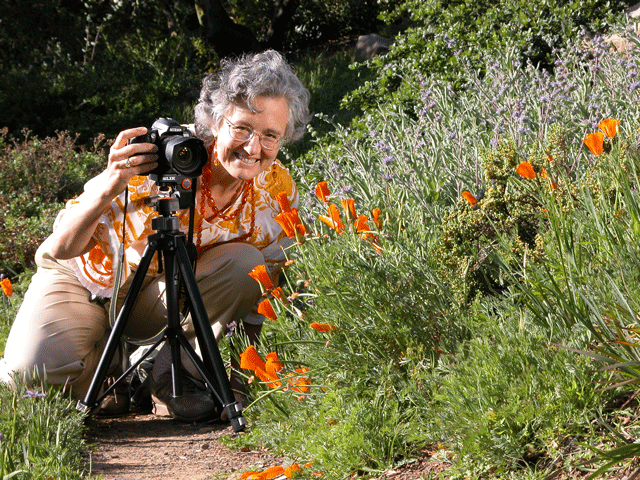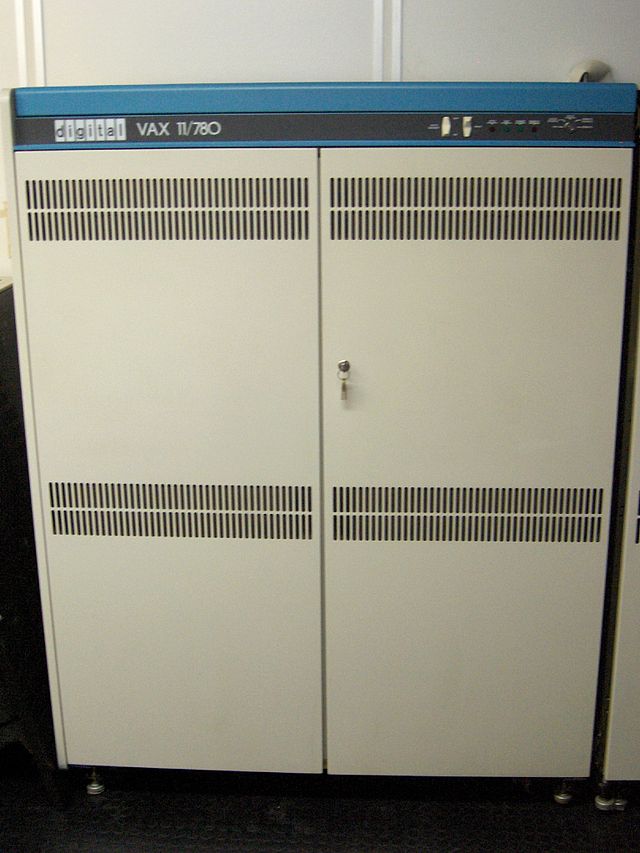The following is from Chapter 7, “Technologic Revolution,” of Susan Baumgart’s “Department History – A Lively Chronicle: 1963-2000.”
The Advent of Computers: Dozier and Strahler team-taught the first Department computer course in Spring 1975, Geography 170 “Univariate Statistics.” The course used an IBM main frame, a PDP-11 minicomputer belonging to the university and available through approximately 20 terminals, most of which were in North Hall. (North Hall is not the building in which Geography was housed.) The two young professors followed up with Geography 171 “Multivariate Statistics.”
Jim Frew, who was an undergraduate at the time, says Dozier and Strahler were like “Laurel and Hardy” – very different, but very good together. The charismatic personalities of the teachers, the joy of finding a tool which solved problems that were otherwise painstaking, and the discovery of latent talents “fired up a whole bunch of us.”
Frew remembers that Simonett “carefully ‘vultched’ [making a verb out of ‘vulture’] space all over campus.” He obtained a very large room in Engineering that had been trashed and ignored and happened to be next door to a computer running UNIX. Frew and the statistics group required two days to remove the enormous, conical pile of junk that sat in the middle of the room. It filled two dumpsters. With the room cleared, they set up little work areas on the perimeter and put a large conference table in the middle. No one knew how to use UNIX next door. The machine was one of the very first made. Dozier taught himself, then badgered Frew into using it. Dozier and Frew became steeped in the machine and its software, knowing them inside and out. “This is where the computerized aspect of the Department [research] took off,” recalls Frew.
A happy group of computer enthusiasts accreted around Dozier and Strahler, working and playing together at all hours. They instituted an annual statistics desert field trip to remote lands east of the Sierra Nevada. They soaked in hot springs sans clothes, climbed rocks with Dozier, and consumed gentle wines and fine foods served on the carryall tailgate by Strahler. For a small subset of Geographers, computers were like Star Trek adventures: going where no man had gone before.
But that didn’t mean all professors and students could expect advanced technology. Tobler described what computing was like when he first came to campus in 1977: “When I arrived here, the computing facilities were abominable. [Chancellor] Cheadle had turned computing over to an administrator who promised to curb the rapid growth in costs that were occurring. This he did, with disastrous results. One of the professors in engineering [Glen Culler] had established an internet-like arrangement, with interactive graphics and computing, far in advance of most other places. This was not supported by the university. It was actually squelched, and the professor in charge left. The computer administrator at UCSB let IBM dictate the type of computing available to faculty with rather awful rituals and clumsy software. I did most of my computing via telephone back to Ann Arbor on a teletype machine, using their Amdahl machine and the interactive MAD language.”
Meryl Wieder, the highest ranking staff member of the Department, arrived June 1978, a year after Tobler. Neither faculty nor staff had personal computers. She remembers Tobler bought the very first: the earliest available Apple with 64K of memory. It sat in Tobler’s office across the hall from her. At the urging of a graduate student named Otto Matt (we did not make up this name!), Wieder bought a $26 dollar software package and installed it on Tobler’s machine. The program performed tasks in three minutes that she used to do in a week by hand. Wieder was now convinced that computers could be great tools. (Not everyone agreed with her.)
Pioneering Application of Computers to Administrative Needs: Golledge’s assistant, Patty Fenwick-Miller, attended a demonstration of VisiCalc spreadsheet software and, returning, urged Wieder to attend the workshop the following Sunday – which she did. From that workshop, Wieder was able to create the first spreadsheet to calculate faculty salaries based on FTE and percent time. In 1980, Wieder changed software to Lotus and processed all the Geography accounts on the computer.
In the early 1980s, State legislative analysts came from Sacramento to assess computing on campus. Geography was one of the few departments that had computers. They saw Wieder using the little Apple for spreadsheets and interviewed her for details. Their report featured Wieder’s computerized tracking and accounting. Geography garnered respect from UCSB Administration. In response, the UCSB College of Letters and Science spent half a million dollars creating an ARCS system, available to all departments within the College. It was a clone of an accounting system developed by programmers in the UC Berkeley Biochemistry Department, which was originally designed to run on Sun workstations. But it ran very slowly on the IBM PCs that Letters and Science bought for the departments. How slow? Screen refreshing could take up to three minutes.
Wieder used her own system in tandem with the College’s system. If she didn’t use the College’s, the Department wouldn’t qualify for the PCs the College distributed. Although not an efficient tool for managing a department, the college’s program was a solution to acquire needed equipment. Over the years, she designed fourteen different databases and changed software from Lotus to Reflex and then, in 1989, to Paradox – which still is used today. In the future, she expects the Department administration to go to the GUS system that is being developed by three programmers hired by the Marine Science Institute and the Department of Chemistry. [GUS replaced Paradox in 2004-05.]
Transformation in Four Years: Golledge, while Chair, parlayed two VAX machines, one for research, one for teaching. The research machine was paid for by Terry Smith’s grant. The teaching machine was paid for with “instructional” funds. Jim Frew had advised Golledge on what kind of machines to get: 11/750s. “750s could plug into the wall; 780s needed special wiring,” Frew explained.
The two VAXes arrived just before Church became Chair, which puts the year probably 1984. (The Remote Sensing Research Lab, Estes’ realm, had had a VAX since 1978, but it wasn’t available to those outside the lab.) Frew was hired to install them in a cool room on the ground floor of Ellison Hall, where Siegel and Washburn now have their labs. Chancellor Huttenback officially inaugurated the machines, and he complained about the poor quality of the champagne that was served. “Rightly so,” confirmed Golledge, since “I served Cooks instead of a good brand.”
Faculty networked to the hulking, early UNIX machines through workstations – some of the very first Sun workstations ever shipped, with serial numbers around “100.” The instructional machine was used for statistics courses and also for document preparation, because a laser printer was hooked up to it. The document prep software was “t-roff,” which wasn’t the least bit wsiwg (what-you-see-is-what-you-get). You marked up your pages, a little like HTML, and didn’t know what the document would look like until you printed it. Soon after the Department got the VAX machines, the first computer system support person was hired.
In addition to Geography’s VAX’s, in 1980 the University made available to faculty and students a computer center with IBM 360 Model 65 clones. At this time, only a few faculty had garnered their own computers through grants. However, by 1988 the Department was completely weaned from the University, and the faculty all had either their own PC or a workstation hooked to Geography’s UNIX. Frew said, “Some of us were slow to adapt to the PC, because we had far more capable UNIX stations. The workstations forestalled the eventual take-over of the PC.” The staff, who had never interfaced with UNIX, now all had their own PCs.
Mapping: Goodbye Pen, Hello Mouse: This computerization of the Department also dramatically affected the way cartography was done. In 1984, student labs had been set up with drafting tables, pens, compasses, protractors, and lettering sets. The Department Artist/Cartographer, Dave Lawson, drew on paper. He had a camera stand with lights for photographing illustrations, used in professors’ slide presentations and printed in journals, and a black-and-white photographic darkroom. In 1988, paper and pen were gone. The labs were set up with workstations and ArcInfo. Lawson drew on a Macintosh, although he still used the camera stand for making slides of illustrations and the darkroom for developing photos of faculty and graduate students.





